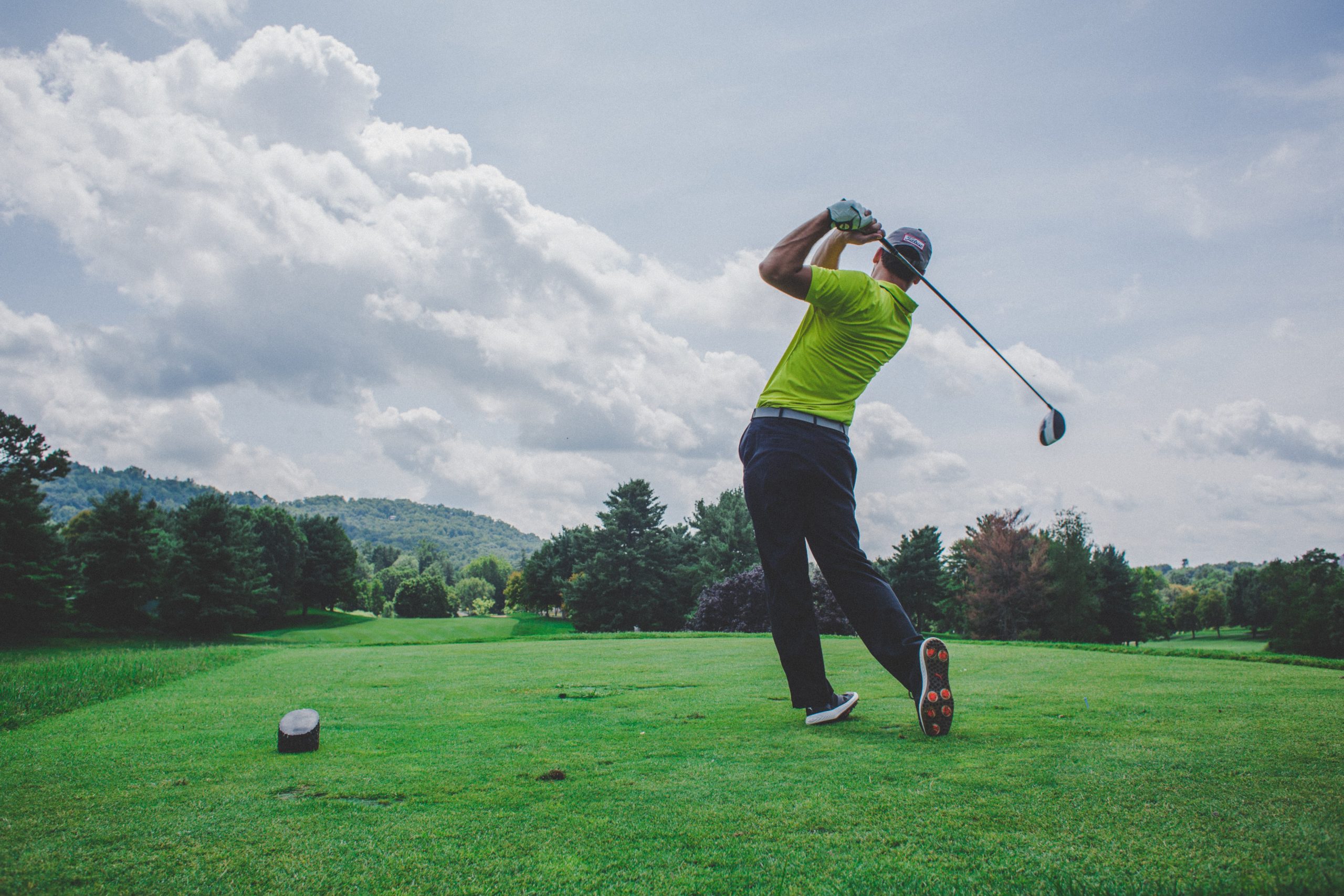| Tom Ward, osteopath at our Surrey clinic, sees golfers with injuries causing lower back pain, upper back pain, and herniated discs. In this blog, he shares the reasons why these golf injuries are common, and 5 strategies to prevent them. If you’re eagerly heading out to the golf course after a winter of not playing, it’s important to think about how to prepare your body in terms of strength and flexibility for the new season. Though it’s tempting to rush straight out on the first sunny day, if you haven’t properly prepared, you could end up with back pain. This applies whether you’re an experienced pro or a once-a-month player, and to golfers of all ages. |
The golf swing
During the golf swing, a player’s upper body twists strongly, and this action is repeated many times. This action puts a lot of strain on the spine – and can put your back health at risk if you’re not properly trained or conditioned. Your swing mechanics need to be well aligned with your posture, as the rotational forces in a golf swing are powerful.
Stretching
Before you even pick up your clubs, it’s important that you stretch your body. Focus on your back, core, shoulders and hips. Here are a few suggestions, but if you already have pain, seek help from our osteopaths who can work with you to create a tailored exercise programme that includes stretches to support your recover.
- While standing with support, bring one knee to your chest and then the other. This will stretch your hamstrings and hips.
- Gentle toe-touches (or as far as you can get down your leg) will stretch your hamstrings and warm them up.
- Gentle upper body rotations will stretch your abdominal muscles, shoulders and arms. Rotate from your waist, extending your arms, from side to side. Then reach for the ceiling, drop your arms and shake them out slowly.
- Take a few easy practice swings, starting slowly and gradually increasing both in range and speed, until you reach a full swing.
Mix golf with other sports
Because golf is a sport that requires such a lot of repetitive actions, consider compensating for the strain that puts on your body through taking part in other aerobic sports such as running, swimming or walking.
Strength training
Start strength training with weights and cardiovascular. Strong limbs and core muscles will support your back and help prevent injury. Cardiovascular exercise boosts the benefits of the weight training, bringing better circulation and oxygenation to the muscles.
Check your equipment
If you’ve been playing for a while, your equipment may need updating to match the way in which your speed and strength has changed over the years. If you are new to golf, get professional advice from the shop before you settle on a set of clubs.
The size and weight of your clubs will affect your swing, and in turn affect the load on your back.
Book an osteopathy appointment if you’re experiencing pain
Our osteopaths are committed to helping you maintain an active, pain-free life. If you’re suffering back pain when playing golf, it’s important to seek help early. We take a preventative approach that means your injuries won’t keep you away from the golf course for too long.
Get advice from our osteopaths
Our osteopath Tom Ward specialises in treating athletes and sportspeople, and supporting them with exercise rehabilitation. If you’re a golfer with back pain, make an appointment with Tom at our Surrey clinic.

